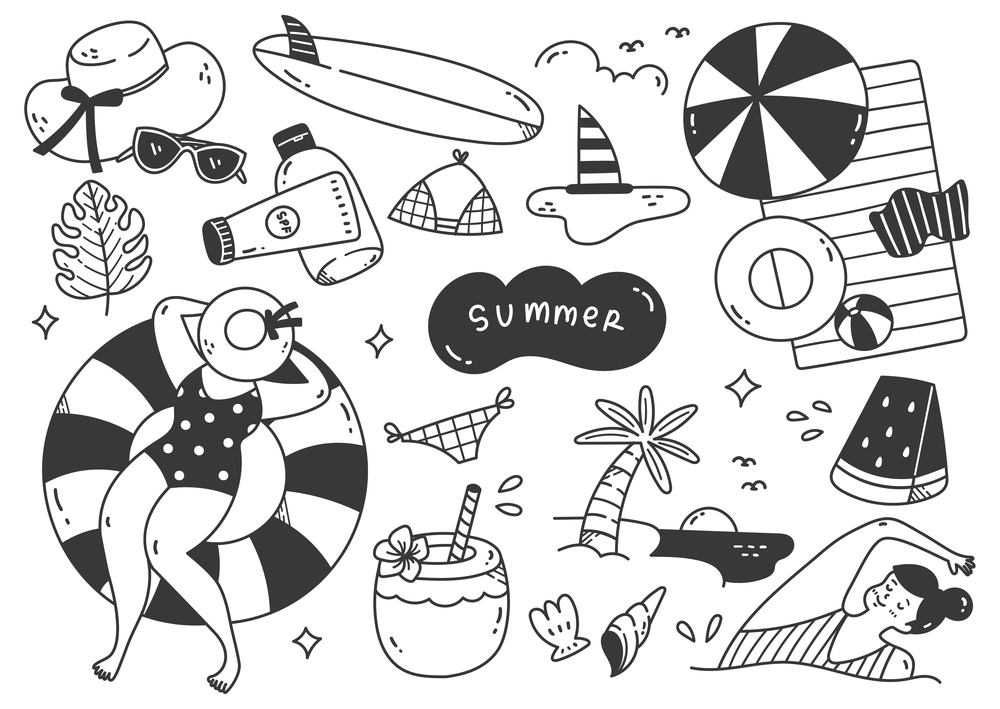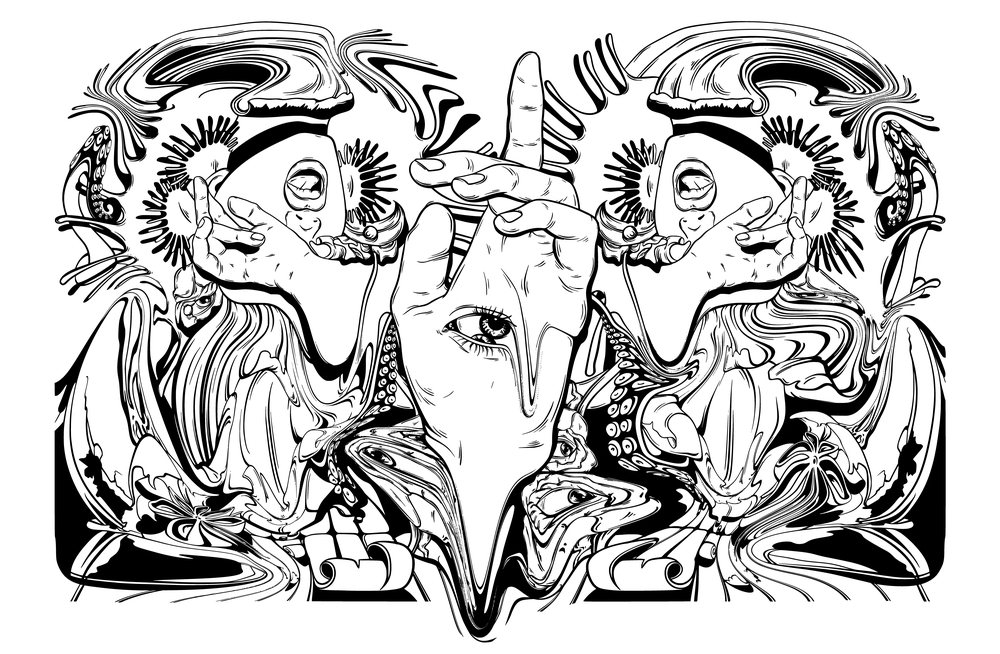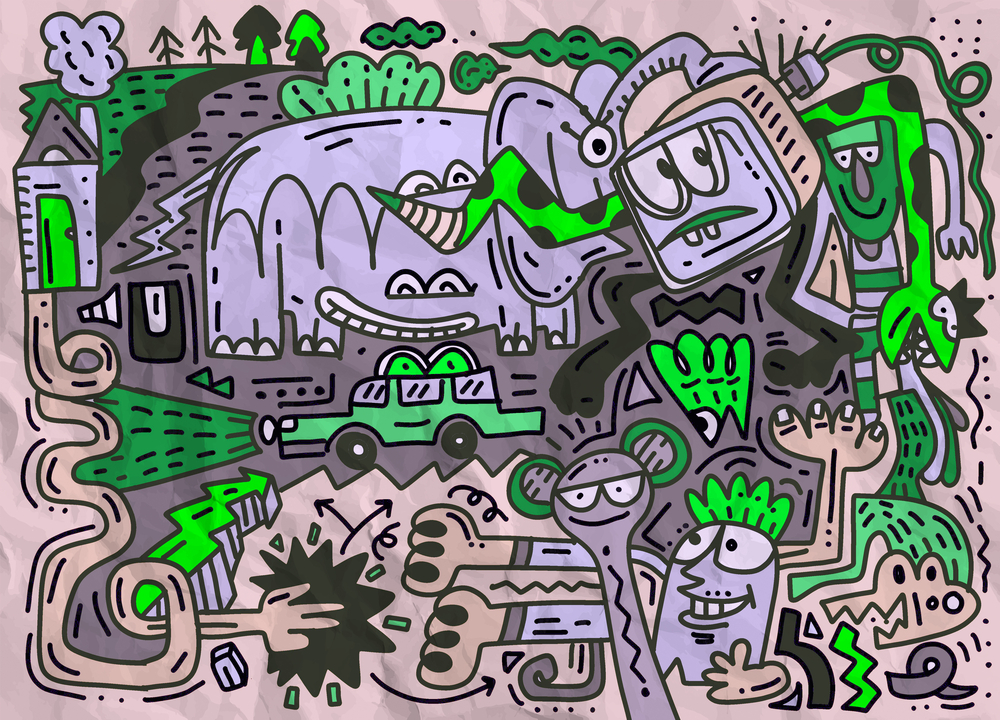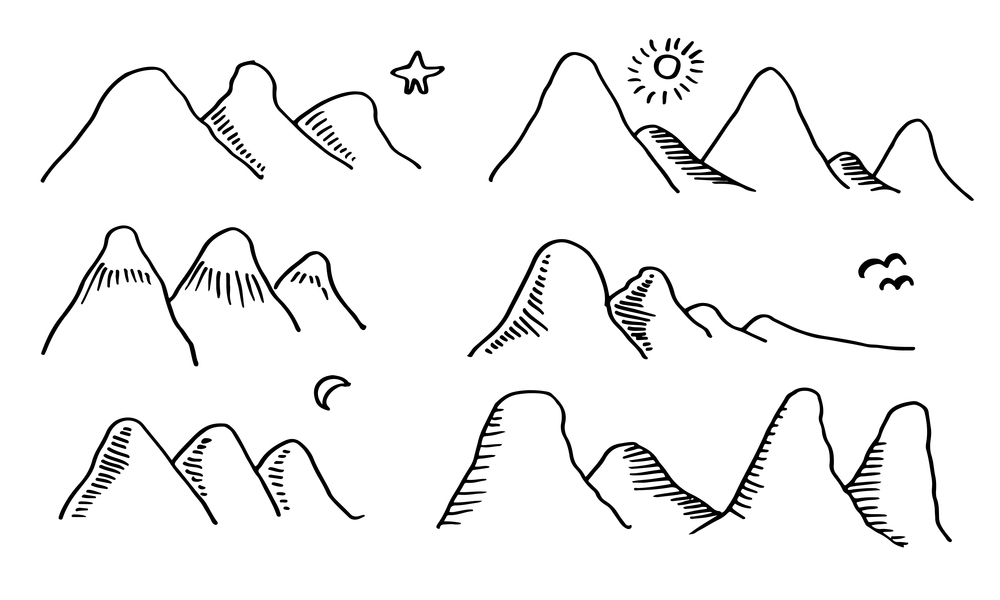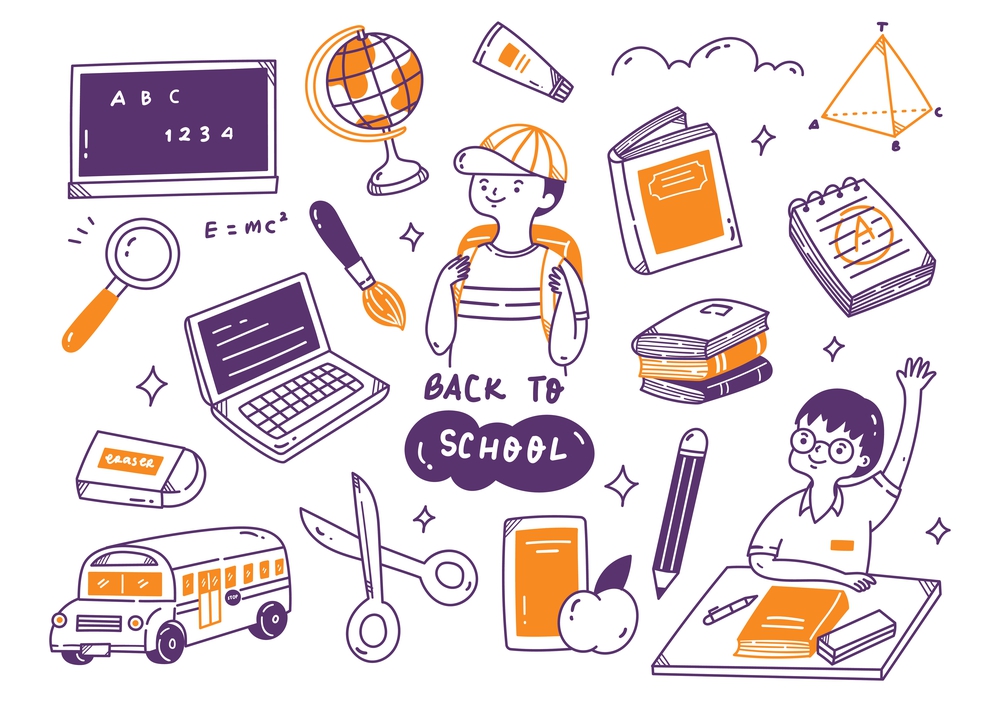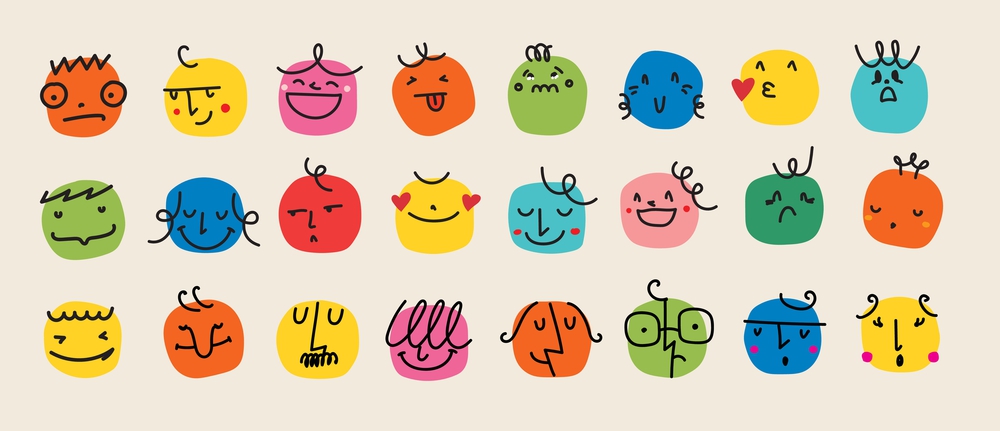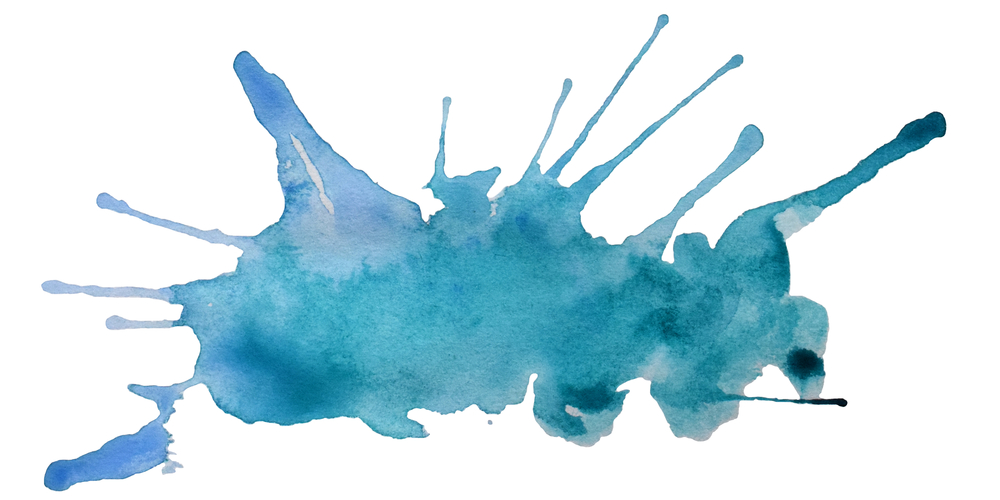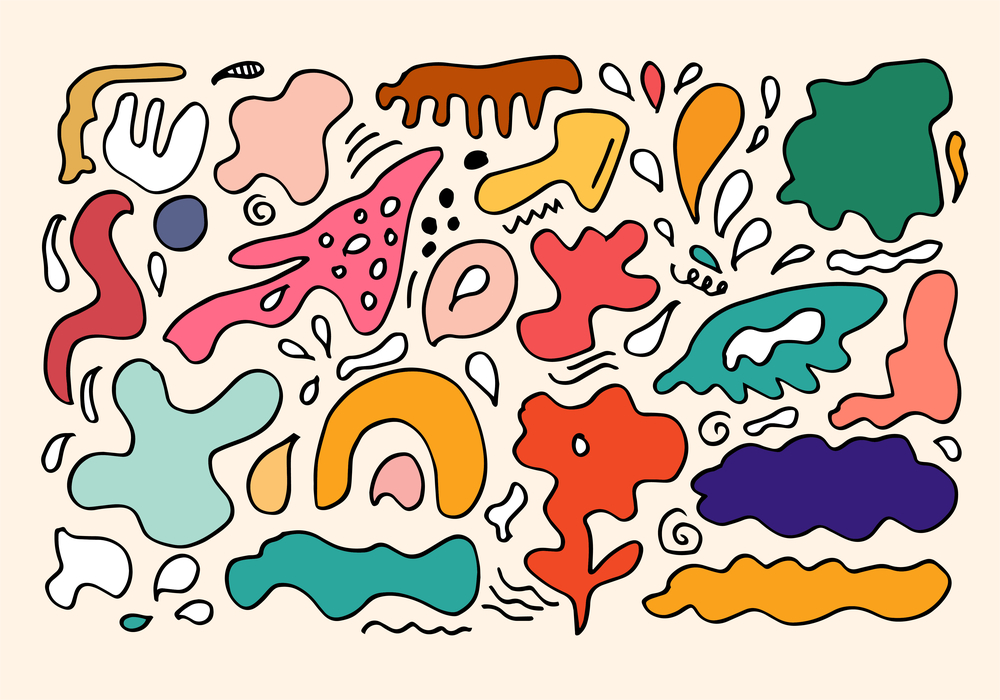Doodle It! A Big Guide to Quick Sketching with Tips, Examples & Collection
How do you feel about boosting your creative thinking, concentration, and memory? Well, there’s no simpler or more efficient way to do so than through doodling and sketching!
In this article, we’ll provide you with time-proven doodling exercises that are equally useful for professional designers, beginners, and people outside of the industry. You will also learn the key benefits of doodling and sketching, and will be able to tell the difference between them.
And for those who are seeking more ideas and inspiration, we included a list of books with dozens of valuable tips on drawing, as well as a collection of diverse examples of doodles. Feel free to use any in your projects!
Browse Doodle CollectionTo get free downloads, click the banner above, switch to «Annual Upfront» subscriptions, and press the «Free 7 Day Trial» button.
What’s the difference between doodling, sketching, and drawing?
Doodle
Task: to boost imagination and concentration, help you to relax or memorize things
A doodle is a scribble, sketch, or drawing one can make as a standalone creative practice or while doing something else like listening to music, attending a lecture, or speaking on the phone.
The distinctive feature of doodling is that the value of it is in the process, not the final result. A doodler doesn’t have an idea of the finished work in their mind—they are drawing intuitively. A result of doodling can become a piece of art to show to others. However, its aim is to help you concentrate, relax, memorize something, or even study yourself.
Sketch
Task: to note an idea for further sharing, explaining, and development
A sketch is form of a rough drawing and it rarely turns into standalone artistic work. The idea behind sketches is to quickly note a concept in visual form or experiment with composition, colors, and volumes when it comes to fine arts (artists can create multiple sketches before start making an artwork).
Sketching is the preparation stage for creating something bigger like a painting, movie, or even a business project. The key feature of a sketch is that it doesn’t contain details, but is a general way to save your idea for further presentation and development.
Find more tips on noting ideas in the form of images: Storyboarding: Areas of Application and Tips for Creation (+ Collection of Templates).
Drawing
Task: to convey an artistic statement or perspective to a wide audience (in a visual format)
Drawing refers to the act of making an artwork with tools like pencils, pens, or their digital equivalents. Along with this, drawing is often used as an umbrella term for doodling, sketching, and fine art drawing.
Sketching may be the first stage of creating drawings, while doodling is still a practice that is not aimed at producing an artwork based on it. Unlike doodling, drawing and sketching are always intentional: artists apply them to illustrate a story, share their attitude or inner state, or make a statement.
Why designers should practice with doodles
Doodling is a useful activity for anyone, regardless of their occupation or age. It helps relieve stress, make your mood better, live through emotions, and even significantly improve memory. Let’s take a look at the benefits that designers and other creatives can gain by regularly practicing it:
#1 Explore new artistic methods
When it comes to sketching, most designers do so to resolve a professional task they already have—such as a website redesign or creating an advertisement layout. They are limited by deadlines and client requirements.
In turn, doodles are all about not having the pressure of expectations and timelines. You simply take a pen and draw what first comes to mind. This technique helps you silence your inner critic and observe the results of being spontaneous.
#2 Get a better understanding of your concept and characters
Doodling can be dedicated to a topic or done with a certain idea floating in your mind. Don’t limit yourself with first associations; go beyond by sketching objects, characters, environments, or even shapes from your imagination. This method is widely used by not only visual artists, but also writers who often leave sketches on the margins of drafts.
More on this topic: 10 Best Data Visualization Tools and Techniques.
#3 Learn things better
Doodling while listening to a speech or attending a lecture is a perfect way to process information and note it, as well as to understand it better and memorize details. However, the skill of taking doodle notes needs development.
Start with short pieces of information like famous quotes, songs, or poems and try to translate them into visuals using lettering, sketches of objects, and abstract shapes. Use a piece of paper as your canvas, but try to note information without being attached to the idea of organizing it by lines or columns.
Interested in drawing letters? Boost your knowledge with another article from our blog: 7 Main Hand Lettering Styles and How to Start Practicing Them.
#4 Notice small details but consider the bigger picture
Doodling as a form of taking notes will help you pay more attention to details such as general atmosphere, accentuated phrases or words, and storytelling tools. Use only one piece of paper to note an entire song, lecture, or concept, so that when your doodling is finished, you can see how different components of them surprisingly combine.
To get free downloads, click the banner above, switch to «Annual Upfront» subscriptions, and press the «Free 7 Day Trial» button.
#5 Boost visual thinking
If you are not a profound visual thinker or it’s still hard for you to sketch using your hand, doodling can be a good beginner level practice.
The main rule here is to lower expectations and automate your drawing. Be spontaneous and avoid rules. Try to focus on what you feel while drawing and explore your potential in translating your feeling into visuals. Doodling is good for reducing stress levels and improving concentration—both factors influence our creative thinking and help you feel more freedom in self-expression.
#6 Generate ideas without creative blocks
Doodling helps us develop the skill of thinking fast with a pen in our hand. Moreover, when you note ideas, you reveal brain resources for thinking about other things. Practicing doodle-format brainstorming daily will make your imagination and mind more flexible and provide you with better control over them.
Browse Doodle Collection
Best techniques to enhance creative thinking with doodling and sketching
Exercise #1. Blind doodling
Why useful: develops imagination and sense of space
This exercise is good for doodling from your imagination. The main rule is to not look at your paper or tablet screen and try to create a sketch. Consider the movement of your hand, the length of your lines, and the ratio of elements in your image. Use your pen confidently and don’t be afraid to make a mistake. The point of this exercise is to learn to feel the space of your canvas.
Exercise #2. A theme per day
Why useful: boosts creativity and idea generation
Perhaps you know about the annual sketching challenge that takes place online under the hashtag #inktober. As part of this event, thousands of artists create sketches on a given theme during October. One topic for each day of the month. However, you can practice this year-round! The main idea of the exercise is to train yourself to solve creative tasks quickly and learn how to easily activate your imagination. The more days you practice, the stronger you become at brainstorming.
And if you need more motivation—think about creating a zine out of your daily drawings. Advice and best examples here: How to Make a Photography Zine and Why You Need It.
Exercise #3. Doodling with your non-dominant hand
Why useful: helps develop your style and explore new drawing techniques
Have you ever tried writing with your left hand (or right hand if you’re a left-handed person)? Try writing and doodling this way and you won’t regret it. You can start by copying the same image with both hands, or just by doodling with the non-dominant hand only. This approach helps you keep both hemispheres of your brain toned, develop hand coordination, and quite possibly discover some more interesting sketching techniques.
Exercise #4. A stain and a doodle
Why useful: improves imagination and problem-solving skills
For this exercise, you will need paint or some coffee from your cup. Leave one or more stains on your sketchbook page and try to imagine a visual story based on them. Next step, use a pencil or pen to add details. This exercise can be both about doodling and sketching, depending on your approach. If your goal is to develop your imagination, focus on storytelling. If you want to improve problem-solving skills, on drawing techniques.
Want to share the results of your doodling online to get more followers? Here are some tips for you: Instagram Art Hashtags to Promote Your Illustrations.
Exercise #5. Abstract doodling: breath, movements, and mood
Why useful: shows ordinary things in a new perspective
Doodles can be about anything: an abstract concept, a specific person or city, or things that are not visual. For example, sounds, smells, and movements. To begin with something, listen to your own breath, and try to reproduce it in the form of lines or a more complicated doodle. Try the same with your heartbeat. When you work on these doodles, avoid literally illustrating the processes and focus on conveying the rhythmic picture.
Top 7 books to improve your sketching and doodling skills:
- “Drawing on the Right Side of the Brain” by Betty Edwards;
- “Sketching User Experiences: Getting the Design Right and the Right Design” by Bill Buxton;
- “The Doodle Revolution: Unlock the Power to Think Differently” by Sunni Brown;
- “Freehand Drawing and Discovery: Urban Sketching and Concept Drawing for Designers” by James Richards;
- “Creative Doodling & Beyond: Inspiring exercises, prompts, and projects for turning simple doodles into beautiful works of art” by Stephanie Corfee;
- “Doodle Art Handbook: The Non-Artist’s Guide in Creative Drawing” by Lana Karr and Olga Dee;
- “The Sketchbook of Loish: Art in Progress” by Lois van Baarle.
A bonus for visual experimenters: 8 Best Design Magazines for Creative Inspiration.
Browse Doodle CollectionTo get free downloads, click the banner above, switch to «Annual Upfront» subscriptions, and press the «Free 7 Day Trial» button.
Wrapping up
Enjoy creative freedom by practicing doodling regularly. This activity aims to make the process of drawing fun, and therefore gives you the opportunity to experiment with new shapes, graphic styles, images, and visual storytelling—all without dealing with your inner critic.
Doodling has no rules or limits. All you need to get started is a notebook and a pencil. Moreover, doodling can be combined with other activities to increase its efficiency. In particular, it good for taking study notes. And most importantly, doodles can also make your Depositphotos portfolio popular—the demand for doodle icons, cartoon character sketches, and doodle-style lettering is currently skyrocketing.
More ideas on how to boost your designs:
7 Creative Design Trends Coming in 2024
What is Digital Design? A Comprehensive Guide on its Types, Tools, and Best Practices
25 Examples of Graphic Design Portfolios and Useful Tips On How to Create Your Own
Guide on Email Design: Best Practices and Examples

